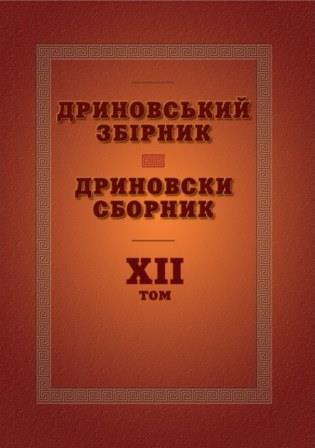Contemporary development of Hungarian ethnological science as a stage “New synthesis”
Abstract
Hungarian Ethnography (folklore in Hungary is traditionally a part of it) has passed a long period of its formation, development, stockpiling of materials and knowledge. The modern state of its development can be called the period of “new synthesis”, because on the basis of the accumulated material for many decades, the research potential was the most voluminous and most important in Hungarian ethnography, the multi-volume synthetic work “Hungarian Ethnography in Eight Volumes” (1988-2011). It became the basis for further development, a certain point of reference and a stage of scientific knowledge, review of the previous and the formation of new generalizations, concepts and terminology, updating the methodology, as well as preparation of the encyclopedia of Hungarian Ethnology in English, which would promote its popularization in the world.For its success and international recognition after the 1990s, Hungarian ethnography owes itself to the integration of all its domains. The leading role in ethnological research is played by the Academy of Sciences of Hungary, in particular the Institute of Ethnographic Studies of the Center for Human Sciences, which consists of four departments: historical ethnography, ethnography of society, folklore and ethnology. In the Institute, with the participation of researchers from other institutions, in addition to the aforementioned, a number of other works of general character were prepared and published: an encyclopedia “Hungarian ethnographic (encyclopedia)”, an “Ethnographic atlas” in nine volumes, a “Hungarian catalog of fairy tales”, a “Catalog of Hungarian historical treasures” etc.
A productive form of presentation of the best achievements of Hungarian ethnology is their publication in serial editions, for example “Ethnographic works”, “Folklore and tradition”, “Folklore archive”, “Seged religious ethnographic library”, “Our heritage of folk art”, “Ethnography of Hungarian national minorities” (Germans, Serbs, Croats, Gypsies, Slovaks, Ukrainians-Rusyns and etc.).
Downloads
References
Kosha, L. 1998. Chyyi vy syny? Ohlyad uhorsʹkoyi etnohrafiyi [What are your sons? Review of Hungarian Ethnography] per. z uhor. L. Mushketyk. Niredʹhaza: kafedra ukrayinsʹkoyi ta rusynsʹkoyi filolohiyi Niredʹhazʹkoho instytutu [Department of Ukrainian and Ruthenian Philology of the Niredʹhaza Institute]. 247 s. (In Ukrainian)
Kuzelya, Z. 1905. Uhorsʹkyy korolʹ Matviy Korvin v slavʺyansʹkiy usniy slovesnosty, rozbir motyviv, zvʺyazanykh z yoho imenem [Hungarian king Matviy Corvin in the Slavic verbal literature, the analysis of motives associated with his name]. Zapysky Naukovoho Tovarystva imeni Tarasa Shevchenka [Notes of the Scientific Society of the name of Taras Shevchenko]. I–IV. Vol. 67, s. 1–55. (In Ukrainian)
Mushketyk, L. 2013. Korolʹ Matyash Korvin u zakhidnoukrayinsʹkykh naratyvakh [King Matyash Korvin in Western narratives]. Folʹklor ukrayinsʹko-uhorsʹkoho porubizhzhya [Folklore of the Ukrainian-Hungarian Transboundary]. Kyiv: Ukrayinsʹkiy pysʹmennyk [Ukrainian writer], s. 281–326. (In Ukrainian)
Paladi-Kovach, A. 2006. Etnohrafichna kartohrafiya v Uhorshchyni. Narodna tvorchistʹ ta etnohrafiya [Ethnographic Cartography in Hungary. Folk Art and Ethnography], № 4, s. 59–65. (In Ukrainian)
Borsos, B., Magyar, Z. 2011. A magyar népi kultúra regiói : A magyar néprajz tér- képe [Regions of Hungarian Folk Culture: Map of Hungarian Ethnography]. Budapest: M-érték K. Vol. I– II. (In Hungarian)
Szemerkényi, Á. (ed.) 2005; 2009; 2007; 2007а; 2010. Folklór és irodalom [Folklore and Literature]. Budapest: Akadémiai K.; Folklór és zene [Folklore and Music]; Folklór és nyelv [Folklore and Language]; Folklór és vizuális kultúra [Folklore and Visual Culture]; Folklór és történele [Folklore and History]. (In Hungarian)
Magyar, Z. 2007. Árpád-házi Szent Erzsébet: Történelem, kultusz, kultúrtörténet [Saint Elizabeth from the Family of Árpád: History, cult, cultural history]. Budapest: Kairosz K. (In Hungarian)
Magyar, Z. 2018. A Magyar történeti mondák katalógusa [Catalog of Hungarian Historical Legends]. Budapest: Kairosz könyvkiadó kft. K. I–XІ. (In Hungarian)
Magyar, Z. 2017. Mátyás király narratív hagyományköre. Típus - és motívum index [King Matthias narrative tradition. Type and motif index]. Budapest: Balassi kiadó. 289 s. (In Hungarian)
Magyar, Z. 2000. Rákóczi a néphagyományban: Rákóczi és a kuruc kor mondavilága [Rákóczi in the folk tradition: Rákóczi and the Kuruc era]. Budapest: Osiris K. 360 s. (In Hungarian)
MNK = Magyar Népmese Katalógusa 1978–2001 [Hungarian Folk Tales Catalog]. Budapest, vol. 1–10. (In Hungarian)
MNL = Magyar Néprajzi Lexikon 1977–1982 [Hungarian Ethnographic Lexicon]. Budapest: Akadémiai K. (In Hungarian)
Magyar Néprajz nyolc kötetben [Hungarian Ethnography in eight volumes] 2011; 2009; 2002; 1999; 1998; 1997; 1990; 1990а; 2000. Budapest: Akadémiai K. Vol. І.1. Táj. Nép. Történelem [Landscape. People. History]; Vol. І. 2. Táj. Nép. Történelem [Landscape. People. History]; Vol. II. Gazdálkozás [Menage]; Vol. III. Kézművesség [Handicraft]; Vol. IV. Életmód [Way of life]; Vol. V. Magyar népköltészet [Hungarian folk poetry]; Vol. VI. Népzene, néptánc, népi játék [Folk music, folk dance, folk game]; Vol. VII. Népszokás, néphit, népi valásosság [Folk ceremonies, folk beliefs, folk religiosity]; Vol. VIII. Társadalom [Society]. (In Hungarian)
Szemerkényi, Á. 2009. Szólások és közmondások [Proverbs]. Budapest: Osiris К. 1461 s. (In Hungarian)

